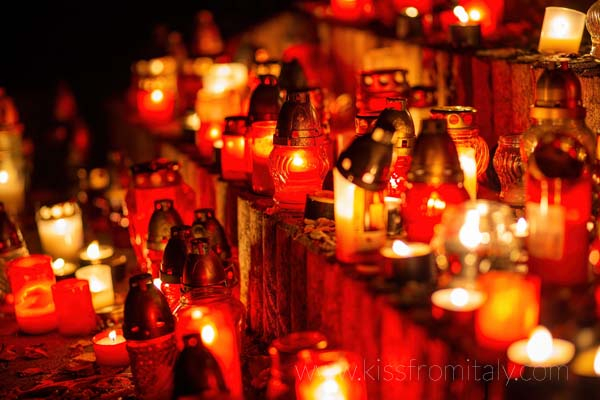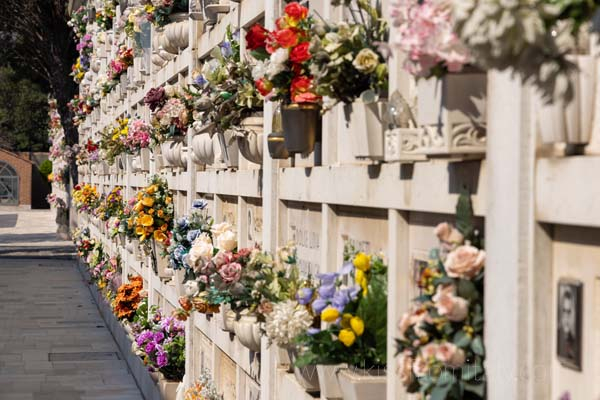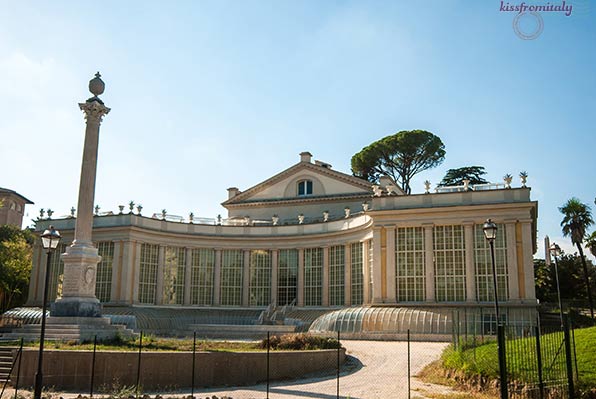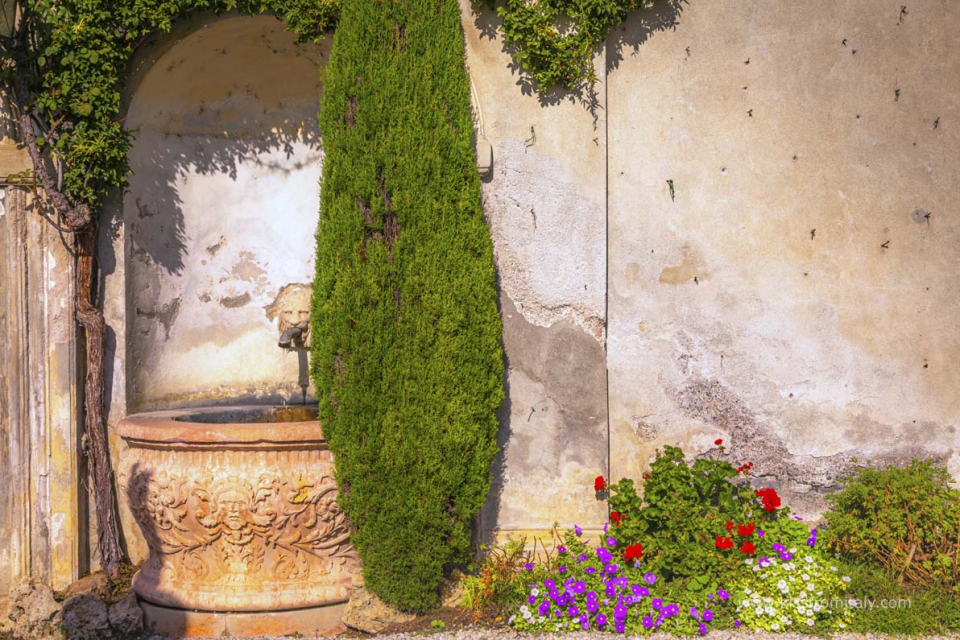
Explore the origins, food, and traditions behind Italy’s Day of the Dead, All Souls' Day celebration on November 2nd
As Halloween celebrations light up haunted houses, costumes, and spooky tricks across the globe, Italy offers a very different kind of tradition—one that’s about reflection, family, and paying homage to those who have passed away.
On November 2nd, Italians honor their ancestors during Il Giorno dei Morti, or All Souls’ Day, a heartfelt tradition that connects generations through prayer, food, and reflection.
Although Halloween has slowly taken hold in modern Italy, Il Giorno dei Morti remains deeply spiritual. It’s not about ghosts or scares — it’s about memory, connection, and love.
Here is all you need to know about the celebration of Il Giorno dei Morti, also called La Festa dei Morti, in Italy.
What Is Il Giorno dei Morti?
Il Giorno dei Morti (The Day of the Dead) is celebrated every November 2nd, following Ognissanti (All Saints’ Day) on November 1st. Families dedicate this day to honoring deceased loved ones, visiting cemeteries, lighting candles, and preparing traditional foods that celebrate life’s cycle. It is also called La Festa dei Morti (The Feast of the Dead).
Cemeteries across Italy are adorned with chrysanthemums, the flower of mourning, while candlelight fills the air with a warm glow. Families gather in homes and churches to share stories, prayers, and memories — a serene contrast to Halloween festivities abroad.
Halloween vs. Il Giorno dei Morti in Italy
While Halloween thrives on spooky costumes and trick-or-treating, Il Giorno dei Morti focuses on spiritual reflection and remembrance.
In Italy, the day is centered around faith, family, and community, not fright. Yet in recent years, major cities like Rome, Milan, and Florence have adopted elements of Halloween, blending fun modern touches with Italy’s timeless customs.
Religious Meaning of All Souls’ Day
Rooted in Catholic tradition, All Souls’ Day reflects the belief in purgatory, where souls are purified before reaching heaven. Italians pray for their departed loved ones to help them along this journey — a gesture that symbolizes enduring love.
Each candle lit and each prayer whispered serves as a bridge between earth and eternity.
Traditional Italian Customs
Italians follow several meaningful traditions, including visiting cemeteries to clean and decorate graves with chrysanthemums, attending special church masses, lighting candles, and sharing traditional foods like "Fave dei Morti" cookies. Some regions also set up home altars with photos, favorite foods, and candles honoring their ancestors.
Gallery
Italian Foods for All Souls’ Day
Food plays a symbolic role in Il Giorno dei Morti. Each region of Italy honors the dead with unique sweets and breads:
Fave dei Morti – almond cookies shaped like fava beans, symbolizing rebirth
Ossa dei Morti – "Bones of the Dead" cookies, crisp and sweet, popular in Sicily
Pane dei Morti – "Bread of the Dead," spiced with cinnamon and raisins, typical in Lombardy and Tuscany
Frutta Martorana – bright marzipan fruits from Sicily, often given to children as gifts "from their ancestors" – More about Sicily Traditions here.
These treats are edible memories — ways of keeping the past alive at the table.
Regional Variations Across Italy
As it happens with all customs in Italy, there are endless variations from one region to another, and even from one town to another. For example, in Sicily, children often receive gifts from their ancestors, and colorful marzipan "Frutta Martorana" is popular. In Naples, people visit ancient catacombs, and Venetians take boat trips to San Michele cemetery island.
Regardless of the local variations, from the Alps to the Mediterranean, the heart of the celebration remains the same — remembrance and love.
While both holidays honor the dead, "Dia de los Muertos" in Mexico is a lively, colorful celebration with vibrant altars, music, and parades. It’s a festive, joyful event often involving costumes and ofrendas (offerings). In contrast, Italy’s "Il Giorno dei Morti" is more somber, quiet, and reflective, focusing on prayers, visiting graves, and remembrance through religious rituals. But, as mentioned, the typical American Halloween culture, has spread also in Italy over the last 20-30 years, so you will find a lot of the classic imagery of pumpkins, ghosts, skeletons etc.
Experiencing All Souls’ Day in Italy as a Traveler
If you visit Italy in early November, you’ll experience a side of the country that few tourists see:
Flower markets filled with chrysanthemums, bakeries offering Pane dei Morti and Fave dei Morti, cemeteries glowing with candlelight at sunset
Traveler Tips:
Dress modestly when visiting cemeteries or churches
Avoid loud conversations
Join respectfully — this is a day of remembrance, not performance
Ancient Origins of Il Giorno dei Morti
Before Christianity, ancient Romans celebrated festivals like Parentalia and Lemuria to honor their ancestors. As Catholicism spread, these customs evolved into what we now know as All Souls’ Day.
This blending of pagan and Christian traditions has kept Il Giorno dei Morti alive for centuries — a perfect reflection of Italy’s layered history and faith.
A Celebration of Memory and Love
Il Giorno dei Morti isn’t about sadness — it’s about connection.
Whether you light a candle in a small village chapel or taste a sweet cookie in Palermo, this day reminds us that love endures even beyond death.
It’s a celebration of those who shaped us, and a promise that memory itself never fades.
FAQ: Il Giorno dei Morti – Italy’s Day of the Dead
Q: When is All Souls’ Day celebrated in Italy?
A: Every year on November 2nd, following All Saints’ Day on November 1st.
Q: Is All Souls’ Day a public holiday in Italy?
A: No, it’s not an official public holiday, but businesses and schools may operate on reduced hours, and families spend time visiting cemeteries.
Q: Can tourists participate in Il Giorno dei Morti?
A: Yes, but visitors should observe respectfully — dress appropriately, avoid taking photos in sensitive places, and follow local customs.
Q: What are the most famous Italian foods for All Souls’ Day?
A: Fave dei Morti, Pane dei Morti, Ossa dei Morti, and Frutta Martorana — each region has its own delicious variation.
Q: How is Italy’s Day of the Dead different from Mexico’s Dia de los Muertos?
A: Mexico’s celebration is colorful and festive, while Italy’s is quiet, reflective, and rooted in Catholic prayer — both share a deep love for remembering the dead.
Plan Your Visit
If you’re traveling through Italy in late October or early November, take time to witness Il Giorno dei Morti. Walk through candlelit cemeteries, taste traditional sweets from local bakeries, and experience a moment of heartfelt Italian spirituality.
Ready to explore Italy beyond the usual tourist paths? Join our travel newsletter for insider cultural guides, local food stories, and authentic Italian experiences delivered straight to your inbox.
Are you planning a trip to Italy? We can help you with organizing great tours and experiences! Contact us to create the ultimate itinerary for your Italian trip.







